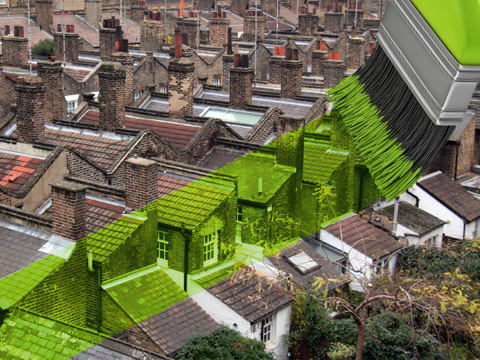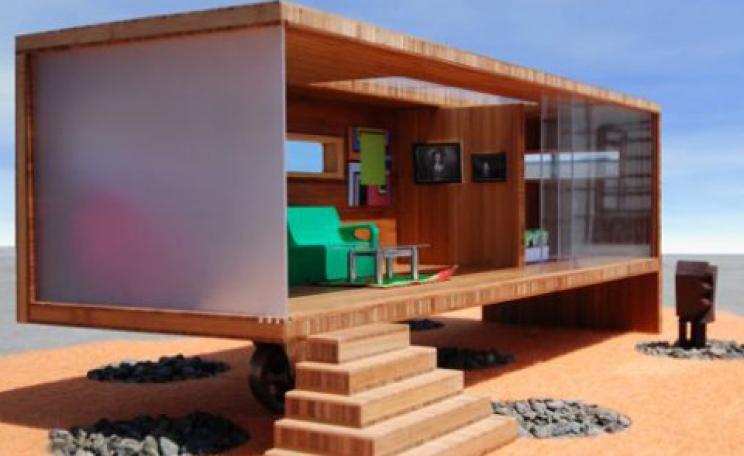On July 4 1845, history’s most celebrated self-builder began to build his home by the side of Walden Pond in the woods outside Concord, Massachusetts. The bill of quantities included 1,000 old bricks at $4, two casks of lime at $2.40 and nails at $3.90.
The builder was Henry David Thoreau. His account of two years living in the woods, Walden, became the first of a torrent of self-promoting publications about sustainable living and ideal homes.
He was as irritating as many of his present-day imitators. ‘I love Henry,’ wrote a friend, ‘but I cannot like him.’ Thoreau was insufferably right about almost everything.
His views on buildings still resonate today: ‘What of architectural beauty I now see, I know has gradually grown from within outward, out of the necessities and character of the indweller, who is the only builder…Shall we forever resign the pleasure of construction to the carpenter?’ For ‘carpenter’, we should read everyone involved in the now heavily regulated business of building a sustainable home today – everyone except the person for whom it is being built.
Building the dream
Ask a colleague, ask a casual acquaintance, ask the taxi driver if they dream of building their own home. How many say no? But if we are so many, why do politicians persist do nothing to help us realise our dream? Why do they continue to rely instead on a way of building houses that they constantly criticise for being slow, inefficient, unaffordable and of doubtful quality?
If we, the dreamers, had more control over the way in which our homes were produced, would they be better quality, more sustainable, more affordable? Could the places that we might make through our own home-building become those elusive sustainable communities that politicians try so hard to create for us?
Potential
So what is the potential for self-provided housing? Three academic studies give us an idea. The first, by researchers at the University of Sussex, concluded that concluded that self-provided homes are most accessible to middle-income families, but help the less well-off, too. Housing market cycles are less acute; there is greater price competition with mass housing, with lower house prices generally; and there is greater ability to match outgoings to income, with consequently greater social and economic security, and polarisation by tenure is less marked.
A second study, by the Joseph Rowntree Foundation, estimated that the market for self-build in 1999 was about 15,000 homes per year and that output is sustained even during market downturns. Some claim the market is now between 16,000 and 20,000 a year. The study concluded that the UK self-provided market was underexploited. The authors pinpointed the difficulty of securing land with a reasonable prospect of planning permission as the main obstacle to market growth, and called for public land to be sold and planning permissions granted with specific conditions.
And the third study, again by the Joseph Rowntree Foundation, concluded that the most significant barrier for community self-builders was a lack of awareness among public sector bodies of the significance of their role as enablers. The authors argued that the greatest single barrier to expanding community (grant-assisted) self-build was the disabling culture of government and the enabling agencies: essentially a deep-rooted fear of letting go and giving up control.
A need to listen
Examples of self-provided housing in the UK and mainland Europe illustrate the power of citizens acting together to bring greater energy, imagination and creativity into housing construction, design, and the long-term sustainability of places. There is inbuilt potential for further adaptation, change and incremental improvements, either because there has been thoughtful future-proofing in the design process and solutions, or because the determination of the citizens will find a way. There are good examples of just about everything that we associate with well-designed and sustainable homes and communities. What’s needed now is a willingness to listen and tap into that energy and creativity, and engage citizens as co-investors in their communities.
Self-providers bring individual and collective social and environmental capital to invest in new homes, new places and commitments to behaviour change, in addition to the financial capital they bring through savings, mortgages, rent and sweat equity. Self-providers offer significant capital efficiencies over conventional housing producers. The forthcoming decade will be marked by acute shortages of public and private capital, and hitherto unknown levels of fossil fuel price unpredictability. These capital efficiencies are valuable resources that policy makers cannot afford to ignore.
Credit crunch-proof?
Indeed, in the current economic climate, self-providers may be more willing and able to maintain production levels when mainstream housebuilders cannot or will not take the risk. Central and local government policy interventions should therefore provide a more supportive environment.
We have also seen that regulatory processes and official attitudes can both help and hinder. However, the public policy framework to support placemaking is now well defined, if not yet well implemented. With growing political support for localism, we now have a unique opportunity to unlock the underused capital of the self-provided market.
Let’s start by changing the vocabulary for the relative positions of power in providing new homes. Housing is a fundamental need of all citizens. It should be a right and duty of all citizens to provide shelter for themselves, either directly or enabled by the state. It’s time for a citizens’ housing revolution in which all citizens have the right to build.
Stephen Hill is director of consultancy C2O Future Planners. This is an edited version of an essay for the Commission for Architecture and the Built Environment's publication, 'Who Should Build Our Homes?'.
| READ MORE... | |
 |
VIDEO Why we need a right to build our homes Rather than depend on a corporate oligopoly to build our homes for us, why not introduce a 'right to build' for everyone... |
 |
HOW TO MAKE A DIFFERENCE Forget eco-towns - real green house-building is already happening Cambridge University's expansion plans could change the face of sustainable building in the UK. In 2012, construction begins on the greenest development of its size and scope in the UK |
 |
GREEN LIVING Building houses with straw bales A house built with straw could cost as little as £70,000 to build - and some are still standing after 140 years. Barbara Jones' fantastic book Building with Straw Bales reveals all you need to know |
 |
HOW TO MAKE A DIFFERENCE Using compressed straw as the ultimate eco building material A new project at Bath University shows that building with straw is not just eco-friendly, but cheap, easily adaptable and fully recyclable at the end of its life |
 |
COMMENT Eco-Towns: without local involvement, forget it Too much political grandstanding has been done with Eco-Towns - the basic idea is sound, but poor planning and a lack of local involvement will doom them to failure, says Dr Gareth Potts |





